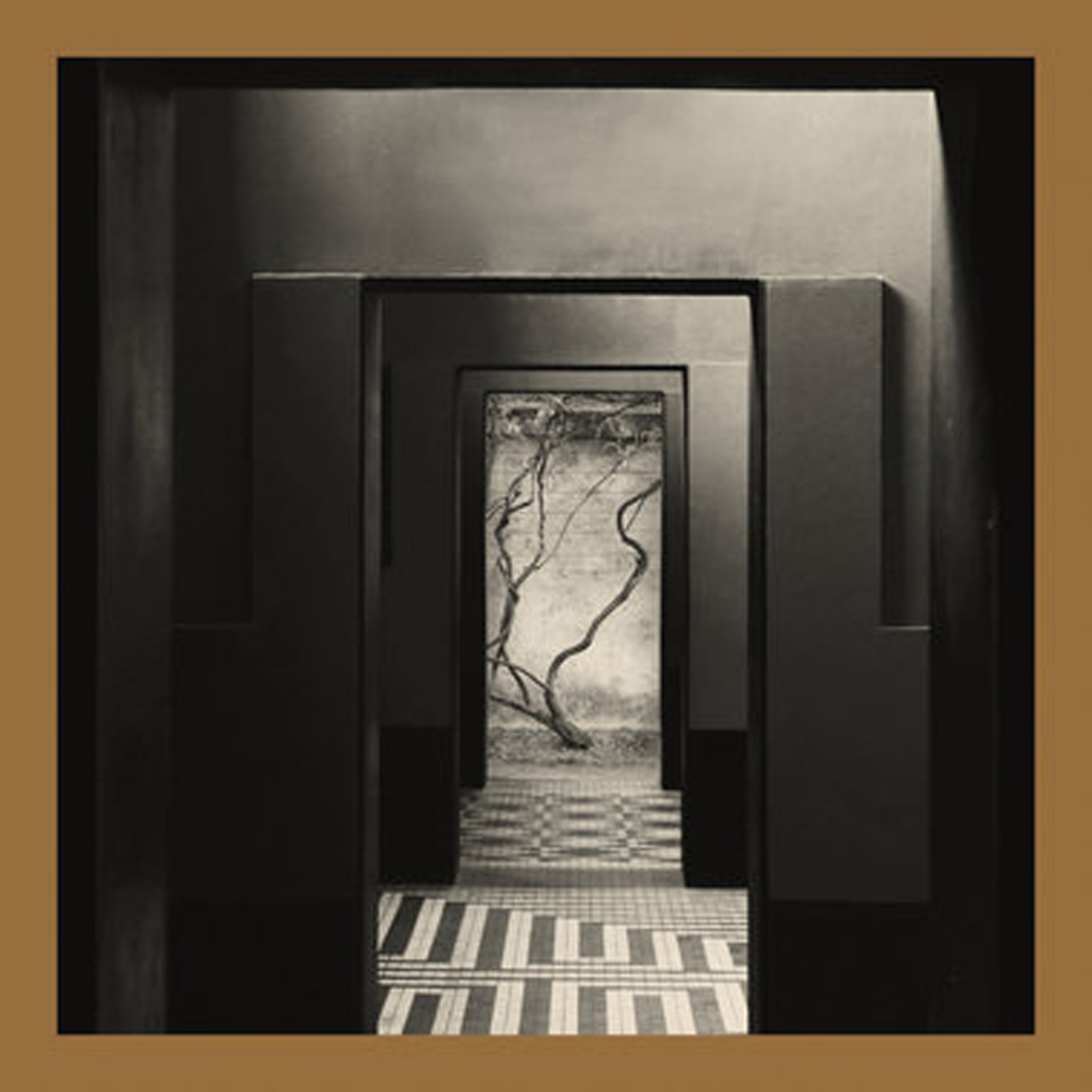Yair Elazar Glotman & Mats Erlandsson, "Negative Chambers"
 Yair Elazar Glotman's monster Études album lamentably slipped by me when it surfaced in 2015, but I immediately became quite a fan once I finally heard it.  As a result, I was thrilled to discover that he was returning once more to wood and strings after last year's Blessed Initiative album.  His collaborator, Mats Erlandsson, is a part of the primarily noise-based Posh Isolation milieu, which makes this an intriguing pairing for the task at hand: creating "imaginary, dislocated 'folk' music for the current dark ages" (exactly the sort of endeavor that seems tailor-made for Miasmah).  Given that the two artists are primarily known for experimental/electronic fare, it is a bit eyebrow-raising to find them exclusively wielding an eclectic array of zithers, singing bowls, Moroccan lutes, and other traditional instruments here, but their production talents prove to be quite useful for shaping their acoustic ethno-appropriations into a shadowy suite of appealingly seething and grinding neo-classical brooding.
Yair Elazar Glotman's monster Études album lamentably slipped by me when it surfaced in 2015, but I immediately became quite a fan once I finally heard it.  As a result, I was thrilled to discover that he was returning once more to wood and strings after last year's Blessed Initiative album.  His collaborator, Mats Erlandsson, is a part of the primarily noise-based Posh Isolation milieu, which makes this an intriguing pairing for the task at hand: creating "imaginary, dislocated 'folk' music for the current dark ages" (exactly the sort of endeavor that seems tailor-made for Miasmah).  Given that the two artists are primarily known for experimental/electronic fare, it is a bit eyebrow-raising to find them exclusively wielding an eclectic array of zithers, singing bowls, Moroccan lutes, and other traditional instruments here, but their production talents prove to be quite useful for shaping their acoustic ethno-appropriations into a shadowy suite of appealingly seething and grinding neo-classical brooding.
I am quite curious about how the concept for this project originated, as the only real harbinger of this path that I can see is Glotman's academic background in classical double-bass and electro-acoustic composition.  That background was probably quite useful when trying to compose an album with a battery of unfamiliar acoustic instruments, but the premise of Negative Chambers arguably seems like something far more likely to emerge from the Sublime Frequencies/Sun City Girls scene (a hypothetical album that would presumably be considerably less bleak and considerably more ragged).  Of course, I say "arguably" because Glotman and Erlandsson are not interested in ethno-musicology so much as they are interested in using the themes of decontextualization and disconnection to create something "new."  I am not sure they quite succeeded in their stated objective, but they certainly managed to produce an unusual and absorbing album with their efforts.  To me, Natural Snow Buildings are the quintessential band who have mastered the art of creating imaginary folk music, while Negative Chambers is far more of a rigorous and well-produced drone/neo-classical album that just happens to use some unusual instrumentation.  I like it, but there is no avoiding the fact this is a very contemporary-sounding album that feels like it was made by a handful of classically trained vampires crowded around a harmonium in their haunted castle.  As such, it is not so much a radical experiment as it is an album that fits very comfortably in the niche occupied by label mates like Kreng and Svarte Greiner: very dark, very cinematic.
The most quixotic part of this undertaking is that one of the unavoidable foundations of folk music is a strong and memorable melody (or at least an infectious rhythm), which is something that both artists have seemingly been historically hell-bent on avoiding at all costs.  For the most part, that trend continues here with the exception of the closing "Format and Formalize Desire," which feels like a beautifully tender and aching elegy for humanity.  Generally, however, Erlandsson excels at dense, gnarled drones, while Glotman seems quite fixated upon vivid textures, sharply realized details, and imaginative deconstructions.  Aside from the occasional rippling or glacially cascading minor key arpeggio, Negative Chambers basically feels exactly like the two artists' expected aesthetics swirled together into a feast of shadowy moods, creeping dread, and rich texture (albeit considerably more stark and organic-sounding than usual).
Aside from the aforementioned "Format," the strongest manifestation of Glotman and Erlandsson's shared vision is "Desacrelasation," which eschews any attempt at melody in favor of a deep, densely undulating rumble of evil-sounding drone beneath a weirdly majestic-sounding haze of shifting harmonies.  The remaining six pieces are a bit less perfect, unfortunately, largely sticking to variations upon something resembling glacially slow and gloomy chamber music.  My overall impression is that neither artist was particularly excited about the "composition" aspect of this album, as the songs themselves feel like simple minor key vamps that needed to put in place before they could gleefully dive into the more important details like orchestration, texture, and sound design.  Happily, however, nearly every piece at least boasts some kind of striking and inventive "hook" to make it stand out.  In "Cornelian Cities," for example, that hook is an absolutely satanic-sounding metallic shimmer, while other pieces offer delights like viscerally shuddering bass strings ("Turn Roots in Iodine") or sinisterly fluttering and shivering violins ("Ceramic Relic").
While I doubt it was intended this way, it belatedly occurs to me that Glotman and Erlandsson might have actually succeeded in creating "folk music for the current dark ages" if that idea is taken to its most pessimistic and perverse extreme.  In simpler, more community-focused times, traditional music celebrated a shared history and offered easily recognizable melodies that everyone knew, so everyone could participate.  In the dark ages of Negative Chambers, everyone is isolated and depressed, no one has a shared history, and everything is decontextualized and recontextualized to strip away its original meaning.  If Glotman and Erlandsson willfully set out to erect a soul-crushing monument to the emptiness and alienation of the modern world using Tibetan singing bowls and Gnawa cymbals as their material, my hat goes off to them–they are a hell of a lot smarter and more ambitious than I am.  However, if Negative Chambers is not actually a brilliant and damning post-modernist denunciation of the current state of humanity, it is at least at compelling album by an unlikely pairing as well as a noble experiment.  While I only fully embrace the final two songs, my tolerance for gloom is admittedly quite low these days and that is the niche that Negative Chambers is targeting.  I tend to be drawn to the more eclectic side of the Miasmah milieu (i.e. the albums that sound the least like they belong on that label (or anywhere, really)).  I suspect most fans of the Miasmah aesthetic (logically) feel the exact opposite, so this unholy union's blackened transfiguration of chamber music may very well lock down a place as one of the label’s defining releases.  It is extremely hard to conceive of anything more "Miasmah" than this.
 



